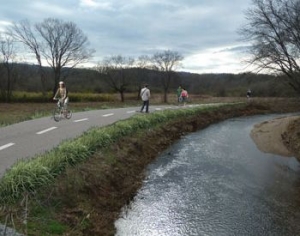
Nonprofit groups are making bold strides and moving into new areas. Many public-private partnerships (P3s/ PPPs) now involve one or more nonprofit organizations. Throughout the country, there are numerous extremely successful examples of great collaborations.
In the past, PPPs traditionally involved collaborative efforts between a public entity and a private-sector coalition. And, a typical PPP engagement is usually based on private-sector capital, the shifting of risk and a long-term (usually more than 20 years) contract. But, public-private partnerships now can be structured in dozens of ways – and nonprofit organizations are often leading the collaborative initiatives.
There are many examples of success. Just this week, plans were announced to redesign what is known as the High Ore Line in Birmingham, Ala. The original line was a railroad track built in the 1920s on an elevated grade so it could pass over existing roads and other rail lines. The track has been out of commission for several years, but a group of partners plan to repurpose it and have it emerge as a paved trail for walking, running, cycling and other outdoor activities.
It will be the latest addition to a 750-mile transportation network of multi-use trails, sidewalks and bike lanes envisioned in the Red Rock Ridge and Valley Trail System master plan in 2012. The collaborators include the Jefferson County Department of Health, the Freshwater Land Trust, private corporations, several nonprofit groups and more than 3,000 community members. Various sources of funding contributed to the project.
In Vermont, an innovative partnership between the Vermont Department of Environmental Conservation, the state’s Nature Conservancy and a coffee company is working to address pervasive water quality challenges in Lake Champlain and to advance Vermont’s Clean Water Initiative.
Vermont, over the past five years, has dealt with severe flooding, a major tropical storm and contaminated waters. The partnership, which was created to improve water conditions, identified ways to conserve water, restore the land, prevent phosphorus runoff and rebuild floodplains. The group also developed a watershed management tool to prioritize water improvement projects. Funding has come from various sources and the partnership includes nonprofit organizations, the state and a private-sector firm.
In Austin, Texas, the city’s Parks and Recreation Department, the Austin Parks Foundation, the Downtown Austin Alliance and an architectural design firm have partnered to renovate an old part of the city known as Republic Square Park. The land was originally set aside for public use in 1839, and the park has been used for outdoor movies, a farmer’s market and various types of family gatherings through the years. It is located on one of the city’s busiest transit centers with more than 5,300 public transportation riders passing through it each day. With a location like that, as well as an historic designation, interest in a renovation project was not hard to generate. The partnership group launched a capital campaign to raise $6 million but other funding sources will provide capital as well. The renovation of Republic Square is expected to be complete in mid-2017.
Although the trend toward nonprofits getting involved in PPPs is more prevalent today, the concept is not new. In North Carolina, the city of Charlotte and Mecklenburg County have partnered with local nonprofit arts organizations, banks, local foundations and philanthropists to build $200 million in cultural facilities over the span of 25 years. One of the most recent projects was the Levine Center, which is now one of Charlotte’s most prominent cultural attractions.
Collaborations are usually successful and it is encouraging to see so many worthwhile ones being launched by nonprofit organizations.
SPI’s procurement consultants are experts in public-private partnerships. Contact them today.

